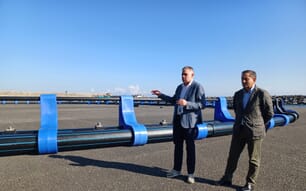“The good news is that we were able to negotiate for our country’s continuous access to the high seas pocket 1,” said BFAR director Asis G. Perez who was part of the Philippine delegation who attended the five-day WCPFC convention that started December 2 this year.
This continued fishing access is a result of the Philippines’ commitment to ensuring long-term sustainability of highly migratory fish stocks parallel with rights under the 1982 Law of the Sea Convention, UN Fish Stocks Agreement and the WCPFC Convention and the country’s adherence to progressive implementation of the Commission’s management measures.
For two years now, the Philippines is the only nation allowed to go fishing in the high seas pocket 1 following a series of proposals set before the WCPFC. In April 2012, the country was granted fishing access in the said area until March of this year. It was then extended until June 2013 after it was ruled that the country was adhering to responsible fishing practice.
The high seas pocket 1 was opened two years ago following a two-year fishing ban in all four pockets due to the growing alarm over declining tuna catches. Not all fishing nations, however, was granted fishing access subject for compliance to tuna conservation measures.
The new success was specially met with enthusiasm by the private sector who sent their fishing vessels to the high seas pocket 1 as part of the Philippine fleet.
“We are very happy with this development. It is definitely very good because, in a way, the high seas pocket became an exclusive fishing ground for us,” said Engr. Augusto Natividad of Frabelle Fishing Corporation.
Perez, however, sees this as both a challenge and an opportunity to encourage the sector to continuously practice responsible fishing such as long line fishing citing some 2,000 metric tons quota left unused for long line fishing.
On October 24, 2013, the Philippines sent off an initial number of 21 fishing vessels to the high seas pocket 1. A hopeful Perez eyes a total of 36 catcher-vessels to sail for the said fishing ground before the year ends.
It can be recalled that in 2012, the Philippines played host to a close to 600 delegates from WCPFC Members, Cooperating Non-Member and Participating Territories during the 9th Regular Session of the WCPFC in Manila.




